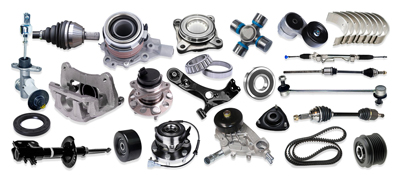A flywheel is a crucial component in many mechanical systems, most notably in internal combustion engines, where it plays a significant role in the operation and performance of the vehicle. Whether you drive a manual or automatic transmission vehicle, or if you’re dealing with machinery such as industrial engines or large-scale equipment, the flywheel’s function remains fundamental. But what happens if a flywheel becomes damaged or worn out? In this article, we will explore the potential issues and symptoms associated with a bad flywheel and the consequences for your vehicle or machinery.
Understanding the Flywheel’s Role
Before diving into the potential problems, it’s essential to understand the flywheel’s function. A flywheel is a heavy, spinning wheel that stores rotational energy. In an automotive engine, it is connected to the crankshaft and helps smooth out the engine’s power delivery by compensating for the pulsations in the engine’s output. This ensures a consistent and stable rotation, reducing vibrations. The flywheel also serves to:
- Engage the engine with the starter motor during the engine startup.
- Work in conjunction with the clutch to transfer power between the engine and the transmission in manual vehicles.
The flywheel’s primary function is to provide energy storage and stabilization, allowing the engine to run smoothly, especially at low RPMs.
Signs of a Bad Flywheel
A bad flywheel can cause various issues that affect the performance of your engine or machinery. Common symptoms that indicate the flywheel may be faulty include:
-
Clutch Slipping: In manual transmission vehicles, a worn or damaged flywheel can cause the clutch to slip. When the flywheel’s surface becomes uneven or worn down, it can prevent the clutch from fully engaging with the flywheel, causing the engine’s power to slip instead of transferring effectively to the wheels.
-
Difficulty in Starting the Engine: The flywheel works in conjunction with the starter motor to engage the engine. If the flywheel teeth are damaged or worn, the starter motor may fail to engage properly, leading to difficulty in starting the engine or failure to start entirely.
-
Unusual Noises: A bad flywheel may produce grinding, rattling, or knocking noises. These sounds are typically caused by worn or damaged teeth on the flywheel or an issue with the flywheel’s attachment to the crankshaft.
-
Vibration: A damaged flywheel can cause excessive vibration in the vehicle, particularly when idling or under load. This happens because the flywheel is no longer able to effectively balance the engine’s rotational energy, leading to uneven power delivery.
-
Difficulty Shifting Gears: A bad flywheel can also cause difficulty in shifting gears, particularly in manual transmission vehicles. The flywheel’s wear can interfere with the proper engagement of the clutch, leading to rough gear transitions.
-
Loss of Power or Performance: A faulty flywheel can disrupt the smooth flow of power from the engine to the transmission. This can result in a noticeable loss of engine performance, especially under acceleration.
Causes of Flywheel Damage
Several factors can contribute to the degradation of a flywheel over time:
-
Excessive Heat: Overheating due to friction from frequent clutch engagement or heavy-duty driving can cause the flywheel to warp or crack. This can lead to uneven surfaces or weakened structural integrity.
-
Worn Clutch: A worn or improperly adjusted clutch can cause excessive wear on the flywheel, especially when it repeatedly engages and disengages with the flywheel surface.
-
Poor Driving Habits: Riding the clutch, excessive slip, or aggressive shifting can cause premature wear on both the clutch and the flywheel, leading to problems such as clutch slipping and vibration.
-
Manufacturing Defects: Though less common, defects in materials or manufacturing processes can lead to a flywheel becoming prone to cracking, warping, or excessive wear.
-
Lack of Maintenance: Regular vehicle maintenance is essential to ensure that the flywheel and related components, such as the clutch, remain in good working order. Neglecting regular servicing can accelerate wear on the flywheel.
Consequences of a Bad Flywheel
If a bad flywheel is not addressed in a timely manner, it can have serious consequences for both the performance and safety of the vehicle or machinery. Here are some of the potential risks:
-
Complete Engine Failure: In extreme cases, a damaged flywheel can lead to engine failure. If the flywheel is severely damaged and unable to properly transfer power from the crankshaft, it may cause the engine to stall or fail to start entirely.
-
Increased Repair Costs: Ignoring flywheel issues can lead to more significant damage over time. For instance, a worn flywheel can cause the clutch to wear out faster, and if the damage progresses, it may also damage the transmission. Addressing the flywheel issue early can help avoid costlier repairs down the line.
-
Decreased Vehicle Performance: A compromised flywheel can significantly reduce engine performance, resulting in a lack of power, rough idling, and an overall unpleasant driving experience. Inconsistent power delivery can affect acceleration and make it difficult to maintain stable engine speed.
-
Safety Hazards: A malfunctioning flywheel, especially in vehicles, can create safety hazards. For example, if the flywheel causes a loss of power to the drivetrain or causes the engine to stall unexpectedly, it could result in dangerous situations, particularly on highways or at high speeds.
How to Fix a Bad Flywheel
The repair or replacement of a flywheel typically requires professional expertise due to the complexity of the task. If a bad flywheel is suspected, a certified mechanic will usually perform a thorough inspection, which may include:
- Visual Inspection: Checking for cracks, warping, or excessive wear on the flywheel.
- Runout Measurement: Ensuring that the flywheel is properly balanced and that the surfaces are smooth.
- Clutch System Check: Verifying that the clutch is properly aligned and functioning to prevent further damage to the flywheel.
In most cases, if the flywheel is excessively damaged, it will need to be replaced entirely. While a flywheel replacement can be costly, it is an essential part of maintaining the vehicle’s performance and longevity.
A bad flywheel can lead to a host of problems that affect both the drivability and safety of your vehicle or machinery. From clutch slipping and difficulty starting the engine to increased vibration and potential complete engine failure, it’s crucial to address flywheel issues promptly. Regular maintenance, proper driving habits, and immediate repairs when problems arise can help prevent flywheel damage and ensure your vehicle or machinery continues to operate smoothly.
If you notice any of the symptoms of a bad flywheel, it’s important to consult a professional mechanic as soon as possible to avoid further damage and to keep your vehicle or machinery running efficiently.

 Twitter
Twitter
 Facebook
Facebook
 Linkedin
Linkedin
 Google +
Google +



